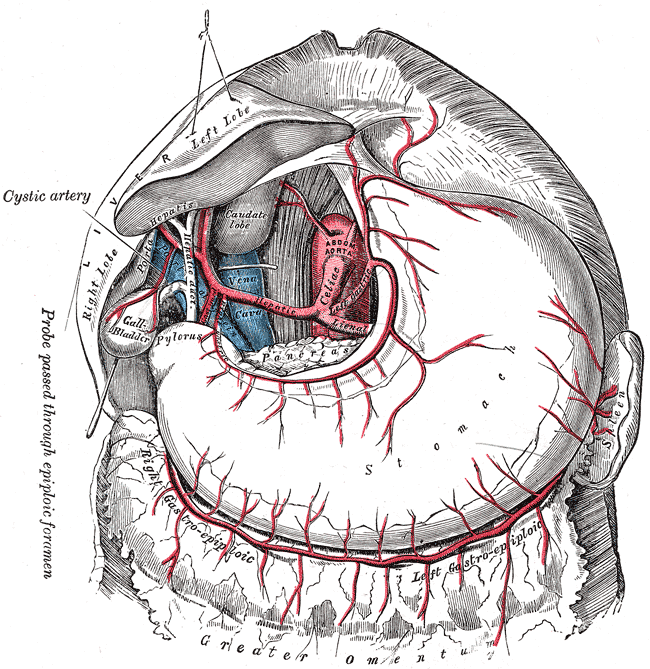[1]
Marangoni G, Cresswell AB, Faraj W, Shaikh H, Bowles MJ. An uncommon cause of life-threatening gastrointestinal bleeding: 2 synchronous Dieulafoy lesions. Journal of pediatric surgery. 2009 Feb:44(2):441-3. doi: 10.1016/j.jpedsurg.2008.09.033. Epub
[PubMed PMID: 19231553]
[2]
Mansfield G, Sabharwal R, Bansi DS, Cohen P, El-Masry N, Jackson JE. Dieulafoy lesions: rare but often overdiagnosed? Observations based upon a case of small bowel haemorrhage and a critical review of the literature. Clinical radiology. 2012 Jan:67(1):78-80. doi: 10.1016/j.crad.2010.12.023. Epub 2011 Jun 11
[PubMed PMID: 21658692]
Level 3 (low-level) evidence
[3]
Then EO, Bijjam R, Ofosu A, Rawla P, Culliford A, Gaduputi V. Rectal Dieulafoy's Lesion: A Rare Etiology of Lower Gastrointestinal Hemorrhage. Case reports in gastroenterology. 2019 Jan-Apr:13(1):73-77. doi: 10.1159/000497139. Epub 2019 Feb 14
[PubMed PMID: 31043932]
Level 3 (low-level) evidence
[4]
Clements J, Clements B, Loughrey M. Gastric Dieulafoy lesion: a rare cause of massive haematemesis in an elderly woman. BMJ case reports. 2018 Mar 15:2018():. pii: bcr-2017-223615. doi: 10.1136/bcr-2017-223615. Epub 2018 Mar 15
[PubMed PMID: 29545438]
Level 3 (low-level) evidence
[5]
Saleh R, Lucerna A, Espinosa J, Scali V. Dieulafoy lesion: the little known sleeping giant of gastrointestinal bleeds. The American journal of emergency medicine. 2016 Dec:34(12):2464.e3-2464.e5. doi: 10.1016/j.ajem.2016.06.024. Epub 2016 Jun 7
[PubMed PMID: 27342971]
[6]
Baxter M, Aly EH. Dieulafoy's lesion: current trends in diagnosis and management. Annals of the Royal College of Surgeons of England. 2010 Oct:92(7):548-54. doi: 10.1308/003588410X12699663905311. Epub
[PubMed PMID: 20883603]
[7]
Senger JL, Kanthan R. The Evolution of Dieulafoy's Lesion Since 1897: Then and Now-A Journey through the Lens of a Pediatric Lesion with Literature Review. Gastroenterology research and practice. 2012:2012():432517. doi: 10.1155/2012/432517. Epub 2012 Feb 14
[PubMed PMID: 22474434]
[8]
Alshumrani G, Almuaikeel M. Angiographic findings and endovascular embolization in Dieulafoy disease: a case report and literature review. Diagnostic and interventional radiology (Ankara, Turkey). 2006 Sep:12(3):151-4
[PubMed PMID: 16972222]
Level 3 (low-level) evidence
[9]
Christoffersen RK, Nielsen TS, Vesterby A. Dieulafoy lesion of the esophagus causing massive upper gastrointestinal bleeding and death: a case report. The American journal of forensic medicine and pathology. 2012 Jun:33(2):186-7. doi: 10.1097/PAF.0b013e318221be16. Epub
[PubMed PMID: 21659839]
Level 3 (low-level) evidence
[10]
Shin HJ,Ju JS,Kim KD,Kim SW,Kang SH,Kang SH,Moon HS,Sung JK,Jeong HY, Risk Factors for Dieulafoy Lesions in the Upper Gastrointestinal Tract. Clinical endoscopy. 2015 May;
[PubMed PMID: 26064823]
[11]
Wu JM, Zaitoun AM. A galling disease? Dieulafoy's lesion of the gallbladder. International journal of surgery case reports. 2018:44():62-65. doi: 10.1016/j.ijscr.2018.01.027. Epub 2018 Feb 10
[PubMed PMID: 29477106]
Level 3 (low-level) evidence
[12]
Dogan U, Gomceli I, Koc U, Habibi M, Bulbuller N. Rectal dieulafoy lesions: a rare etiology of chronic lower gastrointestinal bleeding. Case reports in medicine. 2014:2014():180230. doi: 10.1155/2014/180230. Epub 2014 Oct 1
[PubMed PMID: 25349614]
Level 3 (low-level) evidence
[13]
Nga ME, Buhari SA, Iau PT, Raju GC. Jejunal Dieulafoy lesion with massive lower intestinal bleeding. International journal of colorectal disease. 2007 Nov:22(11):1417-1418. doi: 10.1007/s00384-006-0227-1. Epub 2006 Nov 4
[PubMed PMID: 17086394]
[14]
Linhares MM, Filho BH, Schraibman V, Goitia-Durán MB, Grande JC, Sato NY, Lourenço LG, Lopes-Filho GD. Dieulafoy lesion: endoscopic and surgical management. Surgical laparoscopy, endoscopy & percutaneous techniques. 2006 Feb:16(1):1-3
[PubMed PMID: 16552369]
[15]
Alis H, Oner OZ, Kalayci MU, Dolay K, Kapan S, Soylu A, Aygun E. Is endoscopic band ligation superior to injection therapy for Dieulafoy lesion? Surgical endoscopy. 2009 Jul:23(7):1465-9. doi: 10.1007/s00464-008-0255-8. Epub 2009 Jan 6
[PubMed PMID: 19125307]
[16]
Nojkov B, Cappell MS. Distinctive aspects of peptic ulcer disease, Dieulafoy's lesion, and Mallory-Weiss syndrome in patients with advanced alcoholic liver disease or cirrhosis. World journal of gastroenterology. 2016 Jan 7:22(1):446-66. doi: 10.3748/wjg.v22.i1.446. Epub
[PubMed PMID: 26755890]
[17]
Ünal F, Çakır M, Baran M, Duygulu Ş, Aydoğdu S. Application of endoscopic hemoclips for nonvariceal upper gastrointestinal bleeding in children. The Turkish journal of gastroenterology : the official journal of Turkish Society of Gastroenterology. 2014 Apr:25(2):147-51. doi: 10.5152/tjg.2014.3419. Epub
[PubMed PMID: 25003673]
[19]
Hoffman A, Kunert A, Lahat A, Volkov A, Zmora O, Rosin D. Laparoscopic resection of gastric Dieulafoy lesion following preoperative tattooing. The Israel Medical Association journal : IMAJ. 2011 Mar:13(3):187-8
[PubMed PMID: 21608344]

